
I have been riding mountain bikes for 10 years, but I have never thought about crank length, probably like a lot of people. When I overheard two coaches having a conversation about crank arm length during a recent practice with our local NICA team, the subject piqued my interest. One of the coaches, Michael Maddox, said shorter cranks can make a real difference in on-bike performance and comfort. Coach Mike, as he calls himself, is also a coach with Science of Speed, a local performance testing and endurance coaching company. He has 30 years of high-level racing and coaching experience in cycling, so I knew there must be some truth to his statement.
I asked Coach Mike if the 175mm cranks that came stock on my bike were too long for me. His response was an unequivocal “yes.” From there, I wanted to find out more on the subject of crank arm length and why the lengths have become more standardized. Here’s what I found.
Science favors shorter cranks for mountain bikes
Jim Martin of the University of Utah conducted the seminal study on crank arm length in 2001. He had test subjects ride a stationary bike with adjustable crank arms. He tested a wide variety of lengths, ranging from 120mm to 220mm. The test subjects sprinted all-out for 4 seconds using the various crank arm lengths, and Martin recorded their average power output for each length. Martin found that the max power output of the test subjects only varied by about 4% from the smallest crank length to the largest crank length. Thus, he disproved the argument that longer cranks give riders more power.

In 2010, Paul William Macdermid of New Zealand released a study showing shorter cranks can be more beneficial to mountain bikers than longer cranks. Macdermid focused on the effects of 170, 172.5 and 175mm crank arms on performance measures relevant to female XC riders. Macdermid found that riders reached their peak power nearly 1 second quicker on 170mm cranks than they did on 175mm cranks. That means shorter cranks give riders better acceleration, which can make a difference when passing other riders or trying to clean an obstacle.
Shorter cranks can also have health benefits for riders. In July of 2019, Rick Schultz and Amy Schultz, father-daughter bike fitting specialists and physical therapists, published an article for LER (Lower Extremity Review) Magazine recommending shorter cranks in order to relieve chronic knee and hip pain in cyclists. They argued that longer cranks placed excessive forces on the knee at maximum flexion (top of the pedal stroke). While their focus was on road cyclists, the science applies equally to mountain bikers.
A professional bike fitter weighs in on crank size
I spoke with Ian Buchanan, the founder of Fit Werx in Waitsfield, Vermont to confirm my understanding of the science I found on crank length. Buchanan has raced both road bikes and mountain bikes, and has been fitting riders to bikes for 20 years. Buchanan doesn’t see the logic behind the industry standard of 175mm cranks for mountain bikes.
“Crank length on mountain bikes is pretty random. It seems to be a one-size-fits-all approach with little thought being given to it. If you were going to default to one length and put it on every size bike, then it should probably be 170mm. However, there’s no reason why the mountain bike world shouldn’t have at least 3 different size crank lengths when the road bike world now has 5 or 6 different readily available crank lengths.”
While some argue longer cranks provide riders with better leverage, Buchanan doesn’t believe it’s that simple.
“Cranks are a lever, but they are dependent on levers in the rider’s body. Making things disproportionate doesn’t add up to the best result in most cases. There is more to it than just leverage. You are pedaling in a circular motion, so you have joint movements going on throughout that motion. If people didn’t get joint pain and all there was to pedaling was pushing down, then maybe there would be an argument in favor of longer cranks.”
Besides agreeing with the results of the studies I read, Buchanan also provided a practical benefit to using shorter cranks on mountain bikes: they reduce pedal strikes.
“One of the more common complaints we get from people about riding mountain bikes is that they hit their cranks. For me personally, I hate dabbing a crank when I’m riding, so the benefit of not doing that on a ride alone makes a shorter crank worth my while.”

Speaking generally, he recommends that many riders consider downsizing cranks to a length where you don’t experience frequent pedal strikes when riding.
There is no magic formula for determining a rider’s perfect crank length, but Buchanan uses a simple rule.
“Whether talking biomechanics or simple functionality while riding, I wouldn’t recommend many people under [six feet tall] ride a 175mm crank on their mountain bike.”
How the MTB industry settled on longer crank arms

According to Lori Barrett of ROTOR Bike Components, it began when one major component brand started putting in 175mm cranks as part of their MTB groupsets, and the rest of the industry followed suit. Even though studies have disproved the theory that longer cranks always create more power, riders and the industry have been resistant to change. Barrett, who is 5’4″, uses 165mm cranks on her mountain bike.
“A long crank inhibits my ability to spin a gear up. Since power is generated by a function of force times velocity, and I’m not a power-rider, my best way to make watts is velocity; a quick spin. This means a long crank keeps me from generating power, particularly if I am trying to do it with expedience, like getting up on top of something on the trail. I can tell by my ability to get a bike off the ground if the cranks are too long. And, if I keep riding with cranks that are too long, I get sore hip flexors.”
In the road bike world, there are several different cranks sizes available to riders. The variety of road cranks on the market today stems from road riders being pickier about bike fit because they don’t move around on a road bike the way riders do on mountain bikes.
“Road riders have to be super comfortable for a potential 6 hour stint locked into the same posture. Also, it’s worth noting that there has been a recent interest in shorter road cranks because a short crank puts less strain on the hip flexor, especially if the rider is getting into a more aero position. Fewer MTB riders care about getting aero, and rightly so.”
However, Barrett notes that the mountain bike industry is starting to trend downward in crank length.
“170mm is the new 175mm for OE spec. They result in fewer pedal strikes, and are more neutral for a variety of rider heights. We also see this trend in the aftermarket, although I’d say more riders are interested in upgrades that shave grams or add power to their rigs. We have also had a brisk business in replacement cranks for enduro bikes that have had OE crank failures, still primarily 170mm.”
Will riders see more MTB crank sizes become available in the future? Only if they demand it, says Barrett.
“There’s not many options for high-end, short MTB cranks because the market has not made it so. For ROTOR, we do have some riders, like Chloe Woodruff, who run our 160mm road crank with an MTB axle to get her biomechanics matched up with the right crank length. We also work with the Outlaw MTB freeride kids’ team, and they buy cranks ranging from 155mm to 165mm. For the 155mm cranks, they match our road crank with an MTB axle, but we wouldn’t recommend that hack for bigger riders because road cranks are less beefy in construction than MTB cranks.”
After switching to shorter cranks, I can attest to their benefits
I replaced the 175mm cranks that came stock on my mountain bike with a set of 165mm cranks after reading all the research on the issue. Though the difference in size is seemingly negligible (less than half an inch in length), the difference in performance is amazing. On 175mm cranks, I averaged 2-3 pedal strikes each time I rode my local trails. Now, I can go several rides without a single pedal strike. I also accelerate faster on the 165mm cranks than I did on the 175mm cranks. Best of all, I no longer feel pain in my knees or hips after hard rides. I haven’t collected enough data yet to definitively say that my speed has improved, but the small amount of data I’ve collected so far indicates I am faster on the 165mm cranks than I was on the 175mm cranks.
After experiencing the difference between the two crank sizes, I believe shorter cranks definitely benefit shorter riders like myself.
Don’t let others decide what size cranks you should use
All riders should read the science on the issue and talk to professional bike fitters like Buchanan of Fit Werx to see if they have the right crank arm length on their bikes. Don’t assume the stock cranks on your bike are the right size for you. 175mm cranks might be right for some riders, but they are not right for all riders.
Show your Support
Become a Singletracks Pro Supporter today and enjoy benefits like ad-free browsing.
With your support we can provide free worldwide trail information and original content created by our team of independent journalists.













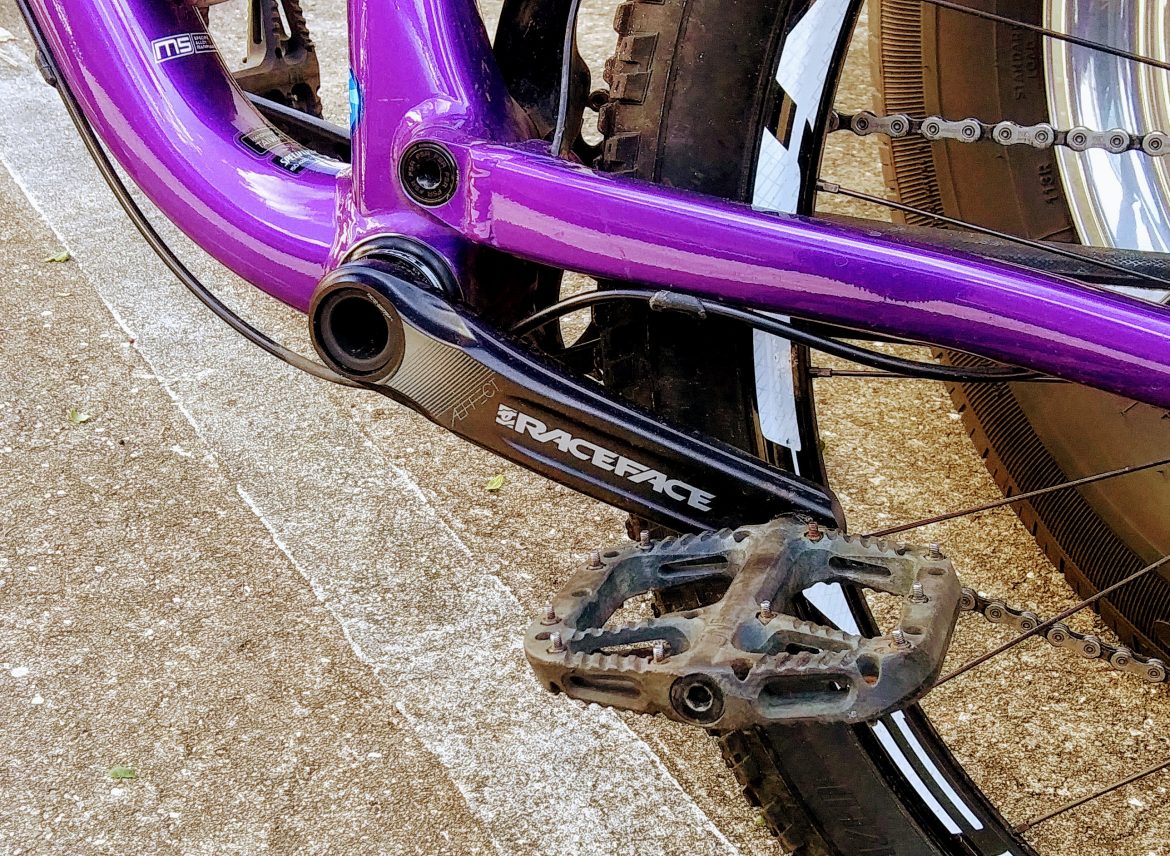
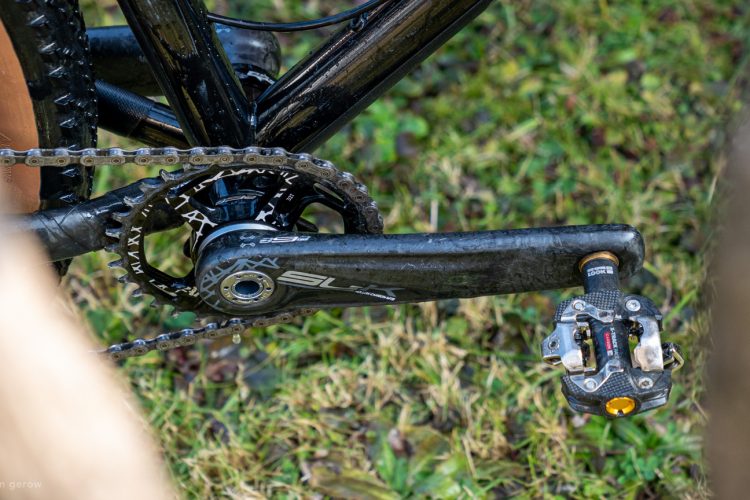
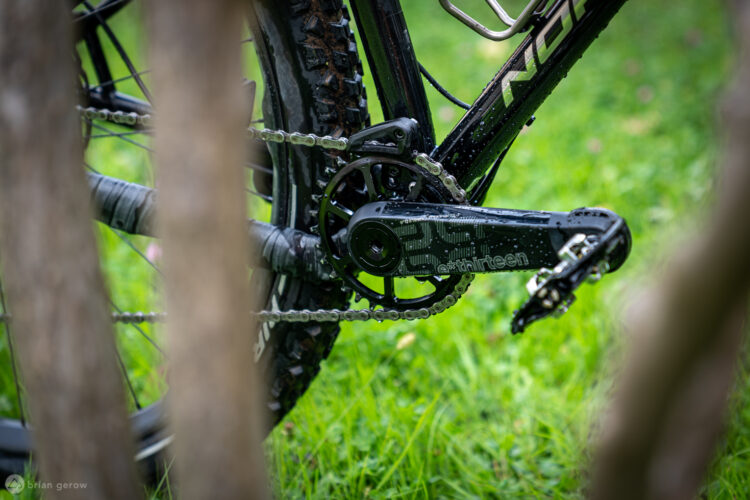


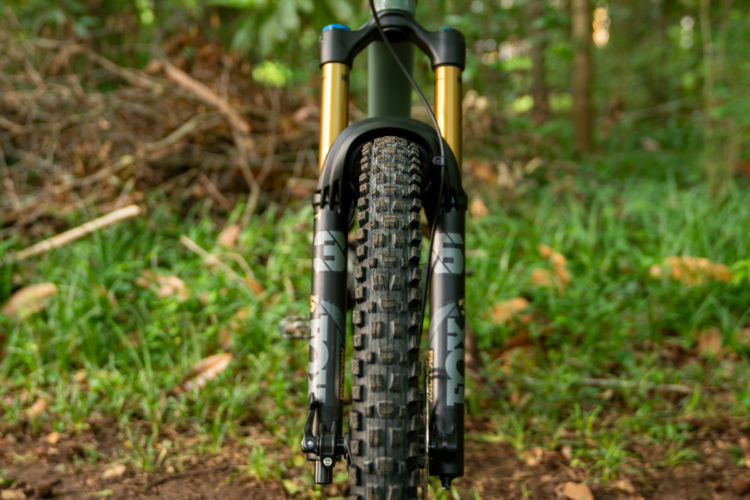
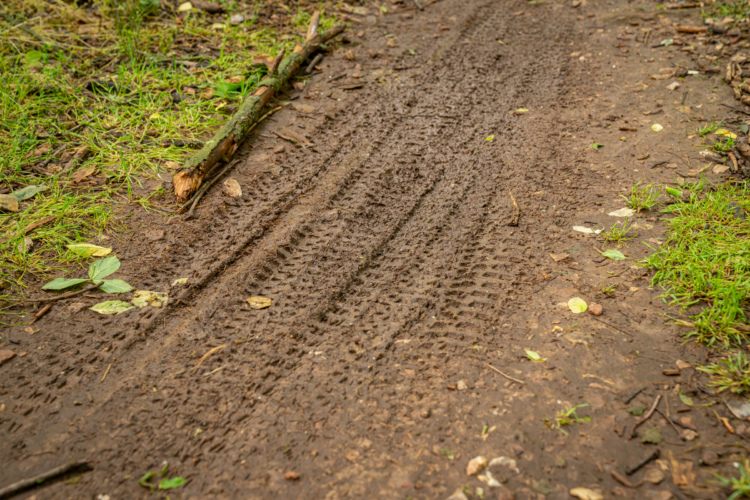

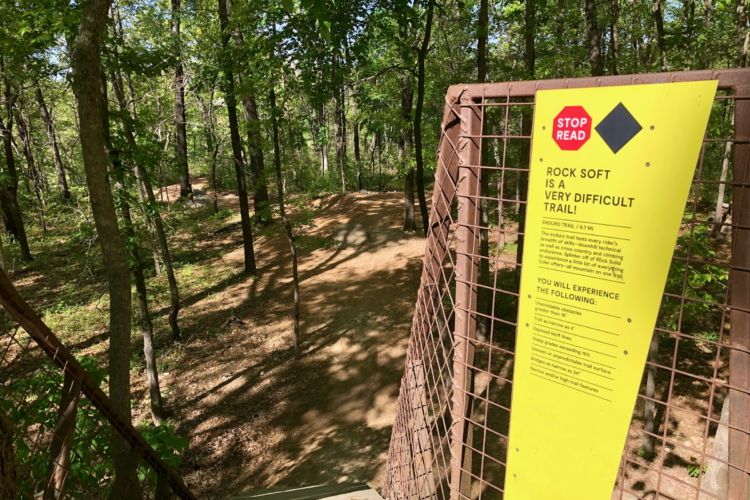

47 Comments
Mar 29, 2021
Trailcraft
127, 140, 152, 160mm
Spawn Cycles
89mm, 102mm
127mm
Brood Styx Cranks
Prevelo
Heir Cranks
Suntour
XCT Jr
Zeron 1-X
Canfield
AM/DH Cranks
SRAM
NX 1x Cranks
Mar 29, 2021
May 4, 2021
I do believe the bicycle industry got crank length all wrong, just like the way they got HTA and Reach length all wrong for decades!
I still have bikes with 155, 165, 170, and 175mm crank length. They all work but I prefer the 155mm over all others. Originally I bought some 155mm Canfield Brothers Cranks back in 2015 just for the ground clearance, but what I found out eventually found was they have much more benefits than just extra clearance.
With 155mm Cranks:
1) I do not need the seatpost at an ideal location to be comfortable, I actually can still lay down some decent power and be fairly comfortable with the dropper fully slammed.
2) I can ride the bigger gears easier. Torque is really dependent on gearing and NOT crank length as most people assume.
3) for people with knee issues, shorter cranks are a god send as you are less likely to tweek your knees due to making smaller circles
4) more ground clearance.
Like I said, I can make any of the crank lengths work and be happy with them if I did not know any better. However, having tried them all, I can easily say 155mm is the way to go. I am 170cm tall (5'7" with shorter legs). I only have 2 sets of 155mm and one set is fairly heavy, the setup is about about 1/2 pound heavier than my 175mm SRAM XX1 DUB Crankset on my Ripmo. If there were lightweight XX1 or RF Next Cranks available at 155mm, I would be all over them.
May 17, 2021
I'm 6'4" and love my 165s.
https://canfieldbikes.com/collections/cranks-chainrings
Mar 25, 2021
Mar 26, 2021
Mar 25, 2021
Mar 26, 2021
Mar 25, 2021
Mar 29, 2021
Mar 26, 2021
Mar 25, 2021
At 6'8", I love my 200mm cranks, the difference between "normal" cranks is dramatic for me. Of course it means I ride custom frames with a bottom bracket 1" higher, but the rest of the frame keeps the back pain at bay.
Mar 25, 2021
Mar 26, 2021
Mar 20, 2021
Mar 20, 2021
May 11, 2021
Apr 17, 2022
My sad story is that for the past several years I have been unable to ride due to a hip issue. Never a hardcore guy, just a weekend trail rider that has had a lifetime of riding bikes.
This stopped for me with the hip issue. It has stopped much of my physical activity. Walking is painful, almost everything. I tried riding one of my mountain bikes and it just couldn’t be done. My leg cannot travel straight up and down above a pedal. The higher it gets, the more it has to flair out sideways.
Thinking this was going to be a short term problem when it began, quickly became a longer term one with Covid… no quick fix now. I have become a shell of the athlete I once was. I have piled on the pounds, all around bad scene.
Looking at my bikes, I thought to myself, what if they made shorter crank arms! Maybe a shorter crank would help cut down the height my knee and thigh have to travel in relation to my hip! A check at a local shop told me that one might find a 160 crank somewhere… this was encouraging! Now I have to find out what size the cranks on my bikes are!
So I did a quick search for short crank lengths and your article appeared. It’s not only given me more hope but I noticed it the comments someone has actually made a list of different sizes available and who makes them! So now I have some experimenting to do! Who knew!
It probably didn’t occur to you that those with some sort of disability would get a real positive charge from this article. Hopefully something positive will come of it… cheers and thanks for the article!
Apr 25, 2022
Mar 19, 2021
No biomechanist or race-contender here, but inseam/leg length, full sus v. hard tail, and rough (trail enduro) v. smoother (trail XC) terrain appear to be important variables for mtb use...all lean toward shorter cranks with shorter legs especially when using suspension on most singletrack trail conditions IMHO🤟.
Mar 19, 2021
May 12, 2022
The thing is, none of this scientific test stuff emulates mountain biking in the real world.
Take for example power up a short steep climb while standing in a harder gear so you can maintain momentum. A longer crank arm will provide more power in that situation.
When seated on a gear bike and spinning, yes a shorter crank arm aids in the ability to spin and with gears a ride can shift into a lower gear and spin to get power torque and power.
I have ridden BMX for decades and I used to ride strictly singlespeed MTB. Now I have a singlespeed and sometimes still ride it. In those two applications, especially while standing, a longer crank arm absolutely gives a ride more torque.
So on a geared bike where a longer crank arm is more beneficial is when a rider is standing and wanting to power over things. Because of this, you don't want to go too short. For me I will stick with 170mm on a geared bike and and 175mm on my BMX bikes and singlespeed mountain bike. I am 5' 7" tall. 165mm is getting too short. Sure, if you are a sit down and always spin type of rider 165s might be fine. But otherwise I wouldn't bother going that short.
What it comes down to is people's personal riding style or preference. When articles or studies try to make it seem like EVERYONE should be doing this it's really not beneficial to anyone. Just like the whole wide bars thing. Every time I see a smaller framed person or kid riding around with their arms waaay out to the sides on 780 or 800mm bars I cringe.
Mar 19, 2021
Mar 19, 2021
Mar 19, 2021
I just switched from 175mm to 170mm cranks, and I can definitely feel the difference. Both of my knees have had popping and some pain, and been getting worse, but I can already feel that reversing. I'm 5'8", so it makes sense that 175mm was too long for me. I'm a huge fan of shorter cranks so far.
Mar 19, 2021
Apr 30, 2021
Mar 20, 2021
Torque capability, rider inseam, Rider strength, typical cadence of said rider regardless of ratio in use.
Now enter the pizza sized cog in the rear with 16' of chain... And the RD that is always grinding the ground next to the rear tire!!!
Jan 26, 2023
Mar 21, 2021
Mar 22, 2021
Mar 19, 2021
Mar 19, 2021
Mar 19, 2021
Going back to 170/175mm cranks made it feel like the circles I had to spin were really exaggerated. I could tolerate 165mm, but vowed not to ride any longer. The moment higher quality short cranks are offered, I'm going back.
Mar 28, 2021
I'm just over 5'10" and have the 152mm ones on my bike. Tried the 140mm as well for a few months and concluded that was OK with them when seated but they felt just a little too short when standing.
Mar 23, 2021
Mar 19, 2021
Mar 30, 2021
Even with the preload-cap and pinch bolts tight with medium threadlock, the NDS crank slides outboard. It has straight mini-splines.
Mar 28, 2021
Mar 25, 2021
Mar 19, 2021
Mar 19, 2021
Apr 12, 2021
We seem to be going through a particularly bad phase at the moment where journalists peddle (ha!) Fashions.
This is yet another, "everybody stop, you're doing it wrong, you should be doing it like this" non-isssue, and there is always the crowd that laps up every bit and follows the latest fashion.
Apr 12, 2021
My overall reading of this article is that there is no such thing as "one-size-fits" all for crank arm lengths which is what I hear you saying as well. Everyone will need to either experiment, or work directly with an expert who can look at all of their individual factors.
Apr 12, 2021
But still, I think riding style outweighs any perceived idea of 'correct' from a bio- mechanical viewpoint.
Consider what a shorter crank length means: a faster cadence. This means that the pedal will return sooner towards any obstacle, which in turn means that there is less time to get over an obstacle before the pedal comes around again.
More leverage created by a longer crank means a higher gear, slower cadence and more distance travelled per pedal revolution.
With this in mind, there is the argument that longer cranks reduce pedal strikes.
To visualise: consider tight single track with a single deep rut (created by walkers, maybe 1 foot wide), and deep enough that pedals will strike the top of the rut regardless of crank length.
Now, you can position the cycle to one side so that the lower most pedal descends into the rut, then move the cycle to the other side so the other pedal can enter the rut. Easy enough, but then add complexities of roots, short climbs and prickly bush obstacles and then timing becomes paramount. Too fast a cadence and you won't clear any of the above combined obstacles without severe (momentum halting) pedal strike.
In this situation, shorter cranks exacerbate the difficulties of traversing the obstacles.
The rest (or all) surely is preference.
Apr 12, 2021
It's a serious accusation in journalism to say an article was edited without notice following publication. I can confirm that the post has not been edited or changed by anyone other than me (editor in chief) since March 16 @ 11:56am. Note this was three days before the publication date; articles are scheduled days, sometimes weeks in advance.
The words MANY and ANY are just one letter off so it's possible you misread it the first time? I mean no disrespect to you but suggesting a post may have been edited is not fair or accurate to the writers, editors, or individuals being quoted.
Comment edit: I just realized my comment might not be clear, sorry! No one has edited the article since March 16 @ 11:56am. I was the last one to make an edit.
Apr 12, 2021